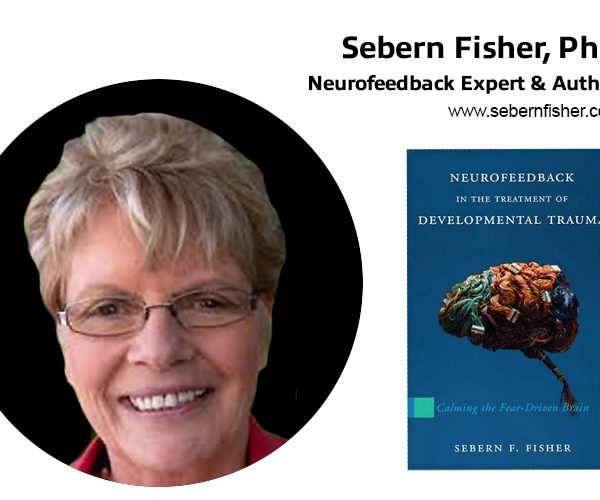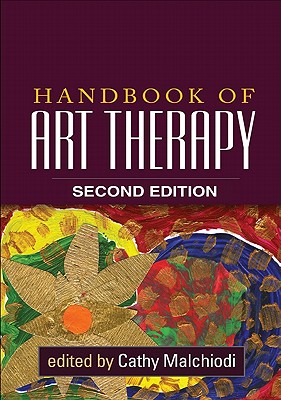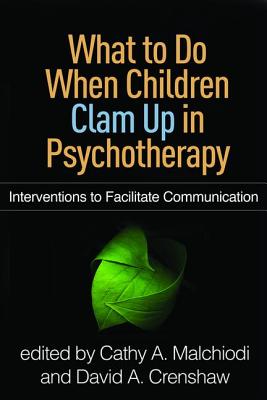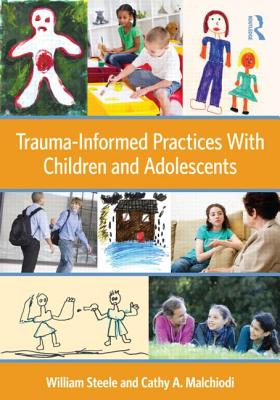While people often communicate their personal stories with words, I believe there is another form of narrative that is embodied. Peter Levine, originator of Somatic Experiencing® maintained that the body communicates the memory of trauma through posture, gesture, movement, breath and other somatic responses. While not all individuals verbalize stories in every expressive arts therapy session, their bodies always tell a story of the traumatic stress they have experienced. I see this narrative expressed in how the person enters the office, sits in a chair and physically engages with me and through body scan drawings when I ask, “show me with colors, shapes, lines or mark-making where you hold that emotion or sensation in your body.” According to Levine this somatic narrative is as important as the language-driven stories people tell; when its story changes over time, it is observable in how people carry and move their bodies. Similarly, Ogden and Fisher, of Sensorimotor Psychotherapy fame, assert that body sensations and movements are constant sources of meaning making.
The practices to support safety, self-regulation and inhabit the body that are the foundation for new somatosensory narratives. Depending on the individual, these narratives may be expressed in movement, sound, enactment or images or a combination of expressive arts. Ultimately, when this shift happens I see individuals start to become more playful and spontaneous, once again comfortable in their own sense of aliveness. However, for many traumatized individuals this can be a difficult transformation because the body has to reclaim its capacity for pleasure when long held beliefs have convinced the person that this may not be possible for reasons of distress, shame or guilt. The following example describes how one individual struggled with this challenge and reclaimed his body’s aliveness through several of the practices described in earlier chapters.
Reclaiming Aliveness in the Body
Anthony was a 27-year-old Army Medic who was referred to me because of posttraumatic stress responses including hyperactivation in the form of anxiety and anger and difficulty with relationships. He had already been in treatment with another psychologist for at least three sessions of EMDR and talk therapy, but his therapist could no longer see him due to her own medical issues. He was sent to the clinic for additional EMDR sessions because he felt he was making progress with this approach and needed some follow-up intervention.
As I took a brief history and we got to know each other, Anthony said something that shook me in the moment: “How can it be that my memories are more alive than me? I can’t control my anxiety, yet my body feels hollow and lifeless.” On a body outline, Anthony completed the image in a way many individuals who are numb to their body’s sensory experiences depict their disconnection from sensations.
For those familiar with Eye Movement Desensitization and Reprocessing (EMDR), a target memory that often has an associated image, negative belief and body sensation, is selected for the focus of a session. When I asked Anthony about what his previous sessions focused on, he reported that his psychologist and he focused mainly on his divorce from his wife of five years; this was a major source of stress for him because he also lost many relationships when his marriage dissolved. As we continued to discuss this, I started to notice what a tightly-wound individual Anthony seemed to be, both in his rigid posture and the rapid cadence of his speech. When I asked him if we needed to continue to work on that memory or something else, Anthony once again surprised me, saying, “I think we need to work on the IED (improvised explosive device) explosion this time.” I quickly realized that this was a memory, for whatever reason, Anthony did not bring up in sessions with his previous psychologist. As he began to provide initial details about this event, I could easily see how his body responded with increasing tension and agitation.
In brief, the explosion caused the death of several soldiers because it was an unusual incident involving multiple devices and a series of mishaps. When I asked Anthony what his most vivid recollection during that time was, he responded that hearing that “the soldiers are gone” from the doctor on duty. When I asked him to isolate a word that might describe a negative belief that he had about himself now, without much hesitation he said, “Incompetent. We should have been quicker. We fucked up the mission and people died.” At this point, we stopped for a moment and I had Anthony once again show me on a body outline what sensations he was experiencing. Similar to his initial drawing, Anthony placed his negative association, this time of stabbing sensations, all around the outside of the outline. In EMDR, we also ask individuals for a positive cognition, a statement that captures what a belief the person would like to have about himself. Anthony took a long time to verbalize, “That I am competent and that I did the best in the moment. But I did fail these men.” He was resistant to this positive belief, but finally agreed to it, indicating that he felt it was impossible to accept at this point.
Through a series of eye movements to desensitize these negative sensations in Anthony’s body, he was able to arrive at the realization that he did the best he could, since the men who died ultimately had no chance of survival. He reported that uncomfortable tension and agitation dissipated, but understandably still retained a sadness, saying “I still have a numbness inside me. Good men died on that day.” For Anthony, letting go of the body sensation associated with the target memory focusing on the death of fellow soldiers from multiple IEDs was a necessary first step. But just letting go of that sensation does not address the body’s need for a new narrative. For Anthony, remaining numb to sensations and feelings had become his dominant somatic narrative; he could talk about releasing his anxiety and anger, but he continued to feel hollow and empty inside and unable to socially engage with others. Two approaches I introduced to him in previous sessions were particularly helpful to support the process of “resensitizing”—self-compassion and trauma-sensitive mindfulness. Both practices helped Anthony not only to allow himself to begin grieving the deaths of the soldiers, but also helped him to slowly and carefully re-engage with sensations and emotions in his own body.
My other recommendation to Anthony was to take up a more physical practice like martial arts, tai chi or yoga to continue to a healthy focus on his body. Often this recommendation particularly resonates with soldiers who have trained their bodies for active duty but usually can benefit from a different way to experience physicality. Anthony did decide to join a regular yoga class and combined with self-compassion practices, was able to slowly allow his body to begin the grieving process. He was also able to rediscover new body narrative that included a sense of mastery, pleasure and satisfying relationships with others. Like many trauma survivors, getting back into one’s body is a process that is more potent if it extends beyond sessions in the psychotherapy office or clinic. Whatever the method, gradually bringing back the sensation of “aliveness” is a reparative process that inevitably helps to generate a new sense of self.
…
Cathy Malchiodi is an art therapist, visual artist, independent scholar, and author of 13 books on arts therapies, including The Art Therapy Sourcebook.
www.cathymalchiodi.com
View Cathy Malchiodi’s expert page with videos, articles, and more.


Books For Sale – Cathy Malchiodi:



























